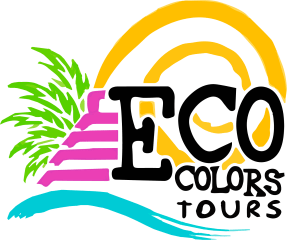One of new seven wonders of the world: Chichen Itzá!
The Yucatan Peninsula offers many archaeological sites which are known from the Mayan World. The amazing Mayan ruins can be found throughout the area among the Yucatan.
The Yucatan’s grandest archaeological site is Chichen-Itza, a UNESCO World Heritage area of immense cultural significance. About 125 kilometers west of Cancún and Cozumel, Chichen Itza is perhaps the largest, most famous and most accessible Mayan site. This tourist attraction is a rugged place of soaring pyramids, startling carved columns and massive temples. The name of Chichen Itza means “at the mouth of the well of Itza”
The most impressive temple is the Castillo, with its 365 steps, 52 panels and 18 terraces. During the fall and spring, the sun’s shadow forms an enormous snake’s body, which lines up with the carved stone snake head at the bottom of the Castillo pyramid. Across from el Castillo, the Temple of the Warriors is also known as the Temple of the Thousand Columns. On top of it there is a stone on which steaming human hearts were offered to the gods. Besides the two most famous temples of Chichen Itza, there are smaller buildings hold interests.
Juego de pelota is a game which was played with a rubber ball with a weight between 3 and 8 kilos. The ball had to be moved without using hands or feet. They let the ball bounce and with their shoulders and hips they had to get the ball to a wall-mounted ring.
The Yucatan Peninsula doesn’t have any streams or rivers, because it is a limestone plain, so cenotes provide the only access to underground rivers. Many cenotes are located in the region, but the Sacred Cenote of Chichen Itza was one of the most important one to the Mayans. The Sacred Cenote is a natural source of 60 meters in diameter.
Interestingly, many perishable objects were preserved by the cenote. Wooden objects for example, which normally would have rotted, were preserved in the water. A great variety of wooden objects were found including weapons, scepters, idols, tools, and jewelry. Jade, a typical green stone used for ornaments and implements, was the largest category of objects found followed by textiles. The presence of jade, gold, and copper in the cenote offers proof of the importance of Chichen Itza as a cultural city center.
Do you want to see and learn more about this phenomenon archaeological site? With EcoColors Tours you have the possibility to book a private Chichen Itza tour to visit the ancient Mayan capital!
